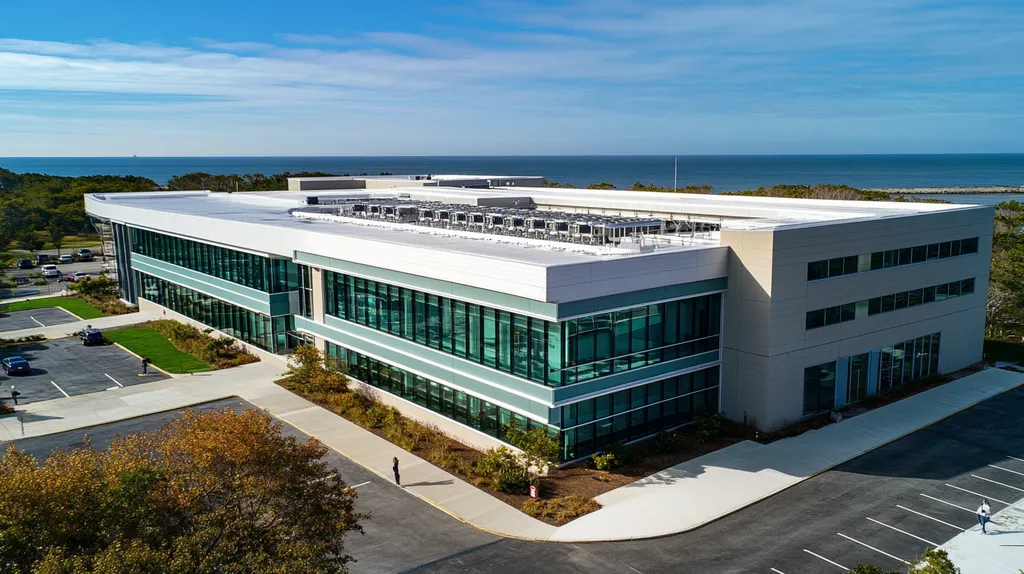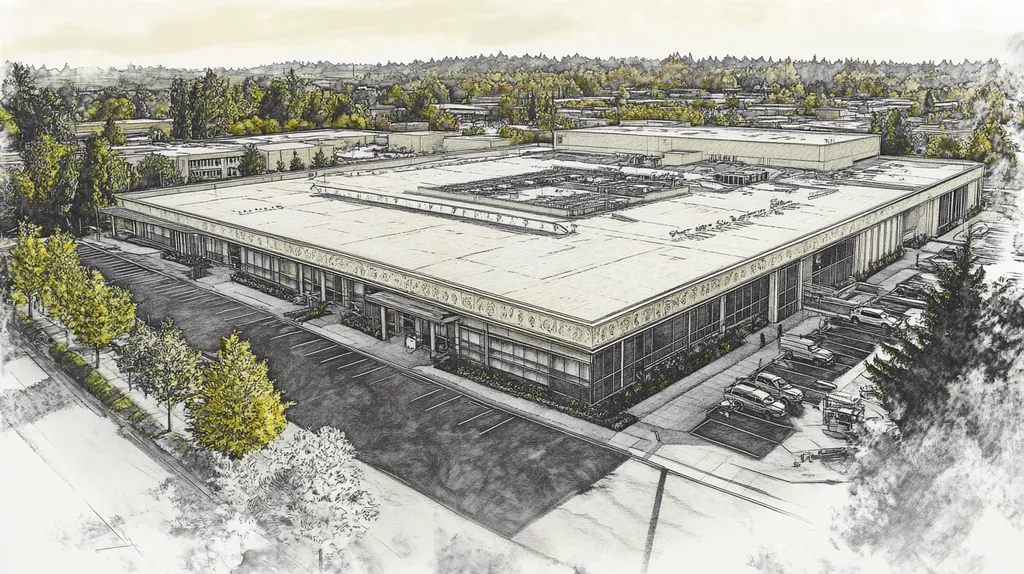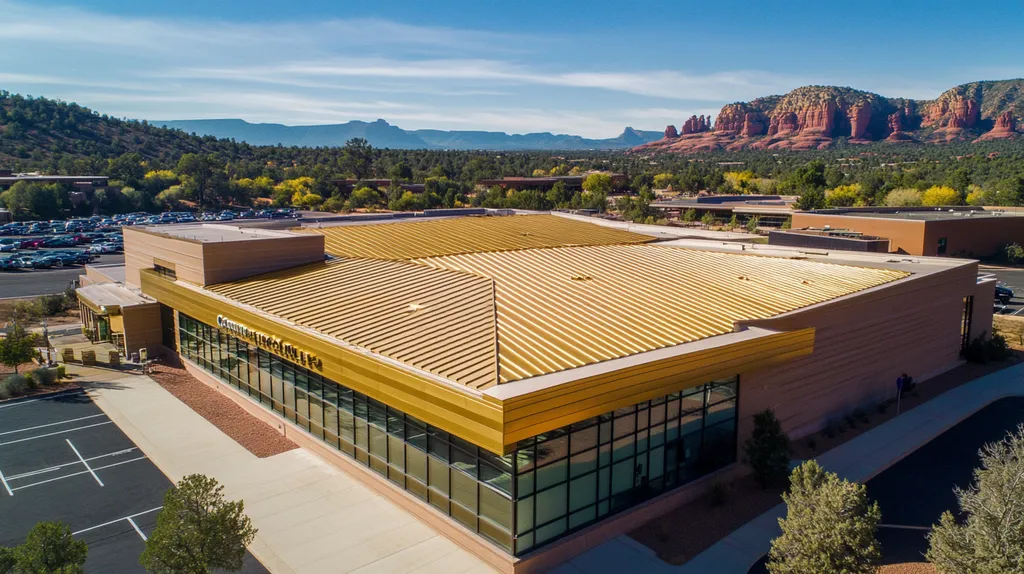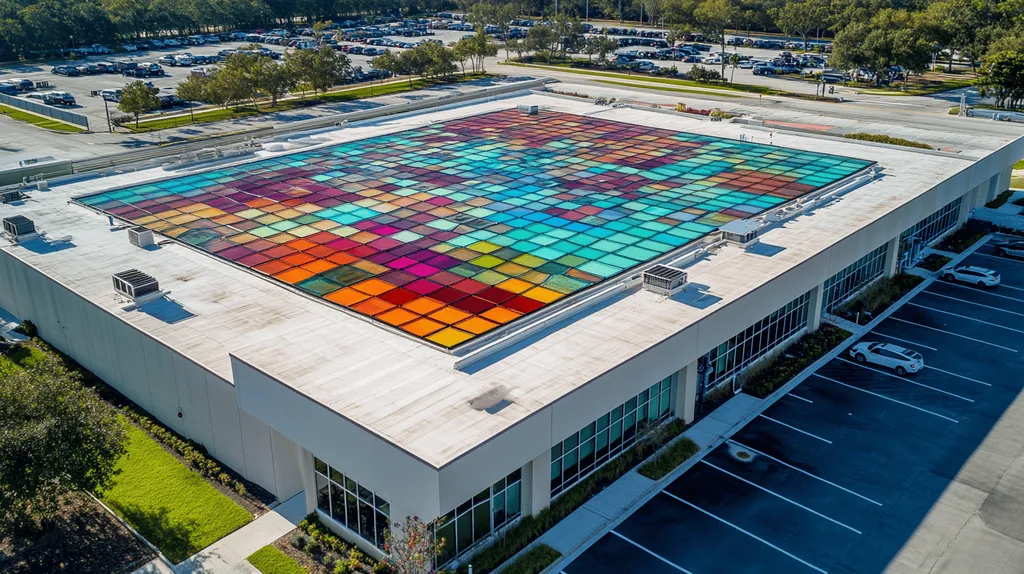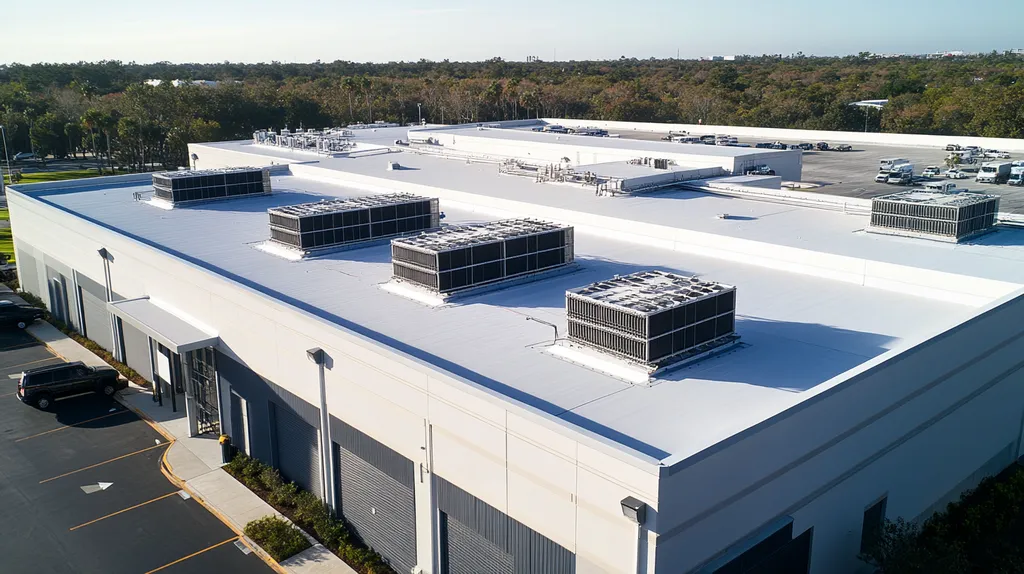Industrial roofing failures cost businesses over $2.5 billion annually, with 40% of these incidents directly linked to poor material evaluation methods.
As extreme weather events increase and energy efficiency standards tighten, traditional approaches to assessing roofing materials leave property owners vulnerable to costly mistakes.
This analysis examines why established evaluation protocols fall short, revealing systemic issues in testing methods, regulatory oversights, and manufacturer accountability that continue to plague the industry.
By understanding these critical gaps, stakeholders can adopt more reliable assessment strategies that protect their investments and ensure long-term roofing performance.
SECTION 1: CURRENT PRACTICES
The challenges of industrial roof installation are increasingly pressing. With energy costs climbing, unpredictable weather becoming the norm, and stringent building codes being enforced, property owners must make informed material choices. Yet many still cling to traditional evaluation methods that fail to meet today’s standards for durability, efficiency, and sustainability.
Sticking to these outdated practices can lead businesses to costly roofing missteps. This section delves into the standard testing protocols, common evaluation methods, and existing industry certification standards—elements that underscore the urgent need for updating material assessment techniques.
Standard Testing Protocols
Standard testing protocols are vital in assessing roofing materials, yet many current methods focus only on performance under ideal conditions. For example, while laboratory tests may effectively gauge moisture resistance, they often overlook how materials react to prolonged sun exposure or significant temperature swings.
This narrow testing scope can mislead property owners into investing in materials that may seem reliable in a controlled environment but could fail under real-world conditions, especially in areas prone to severe weather events.
Moreover, industry bodies that set these standards can be slow to adapt, often covering only traditional materials while new options might excel in lab settings without demonstrating equivalent longevity or cost-effectiveness in practice.
To support better decision-making, it is essential to update testing protocols. By ensuring that evaluations reflect real-world performance, property owners can choose materials that truly meet their needs and minimize future risks.
Common Evaluation Methods
Common evaluation methods typically include physical inspections and reliance on performance ratings derived from historical data. Unfortunately, these approaches often neglect the unique needs of individual facilities, resulting in one-size-fits-all solutions. A roofing material that excels in one climate may not be suitable in another, leading to mismatched choices.
Additionally, property owners frequently base their decisions on marketing materials and technical data sheets, which can present a misleading picture of a product’s effectiveness. This overreliance on promotional claims—rather than practical, field-tested data—can lead to significant decision-making errors.
Adopting more dynamic evaluation methods, such as real-time performance monitoring, offers a promising alternative. Monitoring how materials react to varied environmental conditions can help pinpoint issues early, allowing for tailored solutions that meet specific facility demands.
Addressing the shortcomings in current evaluation methodologies would empower property owners to select roofing solutions that deliver not just initial cost savings but also dependable long-term performance, driving greater industry efficiency.
Industry Certification Standards
Industry certification standards are essential for ensuring roofing materials meet specific quality benchmarks. However, many existing certifications lack the rigor needed to keep up with rapid advancements in roofing technology. Some standards may approve materials based on obsolete performance criteria that don’t address modern challenges.
This gap can mislead property owners, making them believe they are selecting high-quality products when the actual approved materials may be inadequate for their unique needs. Additionally, conventional certifications can hinder innovation by favoring familiar products over cutting-edge materials that could greatly enhance efficiency and sustainability.
It’s crucial to reassess certification processes to embrace new materials and technologies effectively. Establishing updated criteria informed by extensive field performance data can enhance the confidence property owners have in their material choices.
By advocating for stronger, more relevant certification standards, the industry can foster trust and drive progress, ensuring property owners have access to high-quality, reliable roofing options that offer peace of mind.
SECTION 2: SYSTEMIC ISSUES
The current evaluation methods for industrial roofing materials reveal critical gaps that can result in costly failures down the line. Alarmingly, a 2020 study found that over 30% of roofing systems did not perform as expected when subjected to actual weather conditions. Recognizing these systemic issues is essential for property owners who seek to make informed choices about their roofing investments.
Inadequate Weathering Simulations
Evaluation methods often depend on laboratory simulations to forecast how roofing materials will perform. Unfortunately, these tests frequently fall short by neglecting the diverse environmental challenges roofs face, such as extreme temperatures and UV exposure. Therefore, materials that earn high ratings in controlled tests may falter in the face of heavy rain or snow.
This disparity can result in significant consequences, including leaks and structural damage. A material labeled as ‘top-rated’ in testing could deteriorate much faster under prolonged sun exposure, costing property owners dearly in premature replacements.
Moreover, standard weathering tests typically fail to encompass all possible climate scenarios. For instance, roofs located in coastal areas must endure saltwater exposure, a condition that remains largely unaccounted for in typical assessments. Such oversights can mislead property managers to make poor material choices, jeopardizing the integrity of their facilities.
To improve accuracy in material evaluations, the industry needs to implement thorough weathering tests that closely mimic real-world conditions. This shift would provide property owners with better insights into the longevity and reliability of roofing materials.
Overlooking Mechanical Properties
A significant oversight in conventional roofing material evaluations is the inadequate emphasis on mechanical properties, such as tensile strength and elasticity. Understanding these attributes is vital for assessing how well a roof can endure physical stress over time. Ignoring these factors could lead to catastrophic failures when materials cannot withstand loads or adverse weather.
For example, roofs designed with low tensile strength may buckle under heavy snowfall, culminating in structural failures that carry hefty repair costs. Property owners not only confront financial repercussions but may also face safety hazards as a result of such weaknesses.
Additionally, standard evaluation tests often fail to accurately replicate real-world mechanical stresses. Those who have experienced damage from high winds or debris can attest to the necessity of robust mechanical properties. It is essential that evaluations of roofing materials incorporate comprehensive tests that assess these mechanical factors.
By focusing on thorough assessments of mechanical properties, the roofing industry can deliver materials that genuinely meet operational demands and environmental stresses.
Limited Predictive Capabilities
The limited predictive capabilities of current evaluation systems present another critical issue for industrial roofing. Many methodologies prioritize physical weather protection without considering long-term performance and wear characteristics. This shortsightedness leads to a lack of foresight regarding material lifecycle and associated costs.
For instance, a roofing material that appears budget-friendly initially may trigger high maintenance costs down the road if it deteriorates rapidly. Property managers choosing low-cost options without understanding their longevity might find unexpected expenses overshadowing their initial savings, significantly affecting overall budgets.
Moreover, insufficient transparency regarding real-world performance metrics allows many materials to be unjustly promoted. When manufacturers do not provide clear performance data, property owners are left unaware of the long-term implications of their choices.
To enhance predictive capabilities, the industry should advocate for comprehensive lifecycle assessments during material evaluations. Such an approach ensures that property owners are equipped to make decisions that weigh upfront costs against long-term durability and maintenance needs.
SECTION 3: MISSED OPPORTUNITIES
Failing to consider crucial evaluation aspects during industrial roof installation can result in substantial long-term ramifications. Research indicates that roofs lacking adequate solar reflectance may inflate cooling costs by over 15%. Property owners and facility managers need to address these gaps to prevent unnecessary expenses and ensure their roofing choices stand the test of time.
Neglecting Solar Reflectance
The role of solar reflectance in roofing choices is often underestimated. A roof’s ability to reflect sunlight is a fundamental factor in controlling energy consumption. Without sufficient solar reflectance, buildings tend to absorb excessive heat, driving up cooling costs.
Reflective roofs can lower energy usage by as much as 20%, while darker roofing materials absorb heat and elevate rooftop temperatures. This heat retention not only escalates utility bills but also accelerates material deterioration.
Selecting materials for their solar reflectance merits attention and should not be an afterthought. Unfortunately, traditional evaluation methods frequently overlook this critical performance indicator.
Incorporating metrics for solar reflectance into the assessment process can significantly boost energy efficiency and align with sustainability objectives. Decision-makers must grasp this factor before settling on any roofing options.
Ignoring Adhesion Testing
Adhesion testing plays a vital role in ensuring roofing materials bond securely to their substrates. Regrettably, this essential step often gets disregarded in standard evaluation methods. Poor adhesive qualities can lead to peeling at the edges and insulation failure, ultimately resulting in leaks.
Research shows that roofs with inadequate adhesion may experience significant problems within just two years after installation, leading to costly repairs or even entire roof replacements much sooner than expected.
Evaluating the quality of adhesion is crucial to selecting roofing systems that will endure over time. Overlooking this factor can undermine a roof’s reliability and longevity.
By prioritizing adhesion testing during the selection process, facility managers can safeguard their investments and dodge unexpected costs down the road. This seemingly minor evaluation step can lead to considerable savings and extended performance.
Overlooking Accelerated Aging
Accelerated aging tests are crucial for simulating the long-term wear and tear on roofing materials. Yet many property owners fail to appreciate the significance of this evaluation in their decision-making. Ignoring accelerated aging assessments can result in the rapid decline of roofing products, often catching facility managers off guard.
Without thorough testing, materials that perform adequately in the short term may not withstand the rigors of environmental stressors like UV rays, moisture, and temperature changes. This neglect can lead to premature roof failures and hefty repair bills.
For instance, some synthetic membranes claim to offer long lifespans, yet they might not undergo rigorous accelerated aging evaluations. This can foster misguided assumptions about their durability.
Ensuring that materials receive comprehensive accelerated aging assessments empowers managers to make informed choices about reliable roofing systems that provide enduring performance. Implementing this evaluation can markedly enhance decision-making and mitigate risks linked to roof failures.
SECTION 4: ROOT CAUSES
The challenges in industrial roofing are deeply rooted in outdated evaluation methods. More than 30% of roof failures can be traced back to insufficiently tested materials, leaving property owners vulnerable to unexpected repair costs and operational disruptions. This section examines the significant shortcomings in testing, regulatory oversight, and manufacturer accountability that contribute to these alarming figures.
Lack of Comprehensive Testing
Current evaluation methods for roofing materials often fall short due to inadequate testing protocols. Many manufacturers offer performance data that may be outdated or incomplete, leaving property owners with information that fails to accurately reflect real-world performance.
The absence of robust testing can have dire consequences. Materials may not withstand severe conditions like heavy rain or high winds, leading to unexpected repairs and significant financial strain.
Traditional tests frequently ignore critical environmental factors such as temperature fluctuations and UV exposure, which significantly impact a material’s longevity. This leaves a troubling gap between manufacturer claims and the actual durability of materials.
By prioritizing thorough and comprehensive testing, property owners can make better-informed decisions, ensuring their roofing systems are equipped to perform reliably over time.
Insufficient Regulatory Guidance
The regulatory environment surrounding industrial roofing is often fragmented and outdated, creating obstacles for property owners. Current guidelines fail to keep pace with innovations in roofing technology, limiting the resources available for making informed choices.
Existing regulations sometimes allow suboptimal materials to enter the market without disclosing vital performance metrics. This lack of oversight can result in a superficial approval process, leading to a compromise in building safety and integrity.
Facilities managers who rely on these regulations may not fully grasp the risks associated with selecting poorly vetted materials. Outdated guidelines can lead to investments in products that do not meet modern standards for efficiency and safety.
Strengthening regulatory frameworks is crucial for empowering property owners, allowing them to make informed choices that enhance the durability and performance of their roofing systems.
Limited Manufacturer Accountability
Accountability among manufacturers in the roofing sector is a critical issue that often goes unaddressed. Some companies prioritize profits over transparency, resulting in misleading claims about product durability and longevity.
This lack of accountability places the burden on property owners, who must navigate the consequences of uninformed decisions based on incomplete or deceptive data. As a result, these issues can lead to increased costs down the line.
Additionally, many warranties contain complex language that obscures essential limitations, making it difficult for property owners to understand their coverage in the event of a failure. This ambiguity may lead to disputes and further financial losses.
To overcome these challenges, the industry must establish clearer standards of accountability. By demanding higher transparency from manufacturers regarding product performance, property owners can gain the insights needed to make educated decisions.
DATA DRIVEN EVIDENCE
The stakes in industrial roof installation have never been higher. Property owners and facility managers are pressed to ensure that their roofs deliver exceptional durability without breaking the bank. Alarmingly, traditional evaluation methods often fail, leading to premature roof failures and costly repairs. This section delves into laboratory testing results, field performance data, and real-world case studies that underscore the pressing need for more robust evaluation practices in the roofing industry.
Laboratory Testing Results
Laboratory tests reveal that many commonly used roofing materials don’t perform as anticipated under controlled conditions. For instance, a widely-used single-ply membrane exhibited reduced structural integrity after prolonged exposure to UV radiation. These tests show that materials lose vital reflective properties over time, leading to uncomfortable heat accumulation and energy inefficiency.
Additionally, discrepancies between manufacturer claims and lab results often arise. Some roofing products advertise extensive life spans, but testing indicates they may only last half as long in real-world scenarios. This gap emphasizes the importance for property owners to critically evaluate lab results before making any purchases.
Choosing materials supported by independent laboratory testing plays a crucial role in avoiding financial pitfalls. Independent tests frequently unveil weaknesses in products that manufacturers may overlook, equipping facility managers with the insights they need to make wise choices.
Thus, lab evidence stands as a cornerstone of an effective material evaluation process, guiding stakeholders toward reliable roofing options among numerous alternatives.
Field Performance Data
Field performance data offers invaluable insights into how roofing materials endure the challenges posed by the environment over time. Comprehensive studies show that roofs installed with high-quality underlayment provide much greater leakage resistance than those with lower-quality alternatives. This information is critical for property owners as it highlights materials that perform well in varying weather conditions.
In coastal areas, studies illustrate the detrimental effects of saline environments on roofing longevity. Data indicates that certain coatings wear down more quickly than anticipated due to salt exposure, leading to increased maintenance demands. Recognizing these patterns is essential for facility managers planning for sustainable long-term care.
By leveraging real-world performance data, property owners can make material choices more closely aligned with site-specific conditions. Selecting materials proven to thrive in similar environments boosts the likelihood of long-term success and curbs repair costs.
Ultimately, field data serves as an essential tool for transforming material selection criteria, moving beyond traditional reliance on manufacturer suggestions.
Case Studies and Failures
Documented case studies highlight alarming trends of roofing failures stemming from inadequate evaluation methods. One significant incident involved a manufacturing facility that opted for a low-cost roofing solution. Within just three years, leaks emerged, resulting in extensive water damage and financial losses that reached into the hundreds of thousands of dollars.
These failures often arise from improperly matched materials to specific environmental conditions. In another example, a warehouse suffered a catastrophic roof collapse after selecting a system lacking adequate wind resistance ratings. This case starkly demonstrates how prioritizing price over performance can lead to severe—and costly—consequences.
By conducting thorough analyses of such failures, industry stakeholders can glean essential lessons. Understanding past mistakes empowers property owners to adopt a more strategic approach focused on selecting roofing materials that prioritize durability and adaptability.
Integrating lessons learned from historical failures into future evaluations is vital for enhancing industry standards and protecting investments in commercial roofing.
SECTION 6: ALTERNATIVE SOLUTIONS
The industrial roofing landscape is evolving rapidly, and clinging to outdated evaluation methods can put property owners at a disadvantage. Studies show that over 30% of roofing failures stem from insufficient material assessments. To navigate this challenge effectively, property owners must embrace alternative solutions that close these critical gaps. This section explores advanced material testing techniques, integrated performance assessments, and ISO-certified laboratory practices that promise to enhance roofing evaluations and support better decision-making.
Advanced Material Testing Techniques
Conventional testing methods often fail to capture the complexities of roofing materials. Advanced techniques, such as real-time thermal imaging and accelerated weathering tests, offer deeper insight into how materials will perform under specific conditions. These methods can uncover vulnerabilities that standard evaluations might miss.
For instance, thermal imaging can detect heat signatures, flagging potential insulation failures before they become costly problems. Accelerated weathering tests simulate years of environmental exposure in just a few months, providing valuable data on material durability. Armed with these insights, property owners can make informed decisions that ultimately extend the lifespan of their roofs.
Investing in advanced testing technology can yield significant financial returns. A roof that withstands extreme weather not only reduces maintenance demands but also boosts overall operational efficiency. Thus, embracing these forward-thinking methods is essential for property owners who prioritize long-term value in their roofing systems.
Incorporating advanced testing techniques not only refines material selection but also elevates overall roof performance, making them indispensable in today’s industrial roofing sector.
Integrated Performance Assessments
Integrating performance assessments into the roofing material selection process can transform how property owners evaluate systems. These assessments take into account energy efficiency, environmental impact, and long-term durability. By considering the entire roofing system rather than just isolated materials, property owners gain a clearer picture of potential performance.
For example, a roofing system designed with integrated performance assessments might utilize reflective materials, significantly reducing heat absorption. This leads to lower cooling costs over time, demonstrating that smart evaluations can yield smarter budgeting. Understanding these interdependencies helps stakeholders make optimized roofing decisions.
Additionally, integrated assessments promote collaboration among diverse experts, including structural engineers, environmental scientists, and roofing contractors. This teamwork ensures that every facet of the roofing system is tuned for maximum performance, cost-effectiveness, and sustainability.
As the requirements for industrial roofing evolve, adopting integrated performance assessments can lead to superior material selection and foster more efficient, durable roofing solutions.
ISO-Certified Laboratory Practices
Utilizing ISO-certified laboratories is essential for ensuring the reliability of material testing. These labs adhere to rigorous international standards, providing property owners with trustworthy data for their roofing projects. With materials tested under universally accepted protocols, facility managers gain confidence in the accuracy of the results compared to traditional methods.
ISO certifications guarantee that laboratories maintain consistent testing methodologies, minimizing variability that could skew outcomes. For example, roofing materials evaluated in ISO-certified labs are compared against established international benchmarks, allowing for clear comparisons across different options. This reliability supports informed decision-making.
Moreover, choosing materials from manufacturers compliant with ISO standards enhances the overall integrity of roofing systems. Such compliance often translates to products that perform better through the years, resulting in fewer repairs and lower overall costs.
By integrating ISO-certified practices into the roofing material evaluation process, property owners not only boost their confidence in the results but also support a quality assurance culture that can transform the roofing industry for the better.
Moving Forward
The industrial roofing sector stands at a critical crossroads, with over $2.5 billion in annual losses directly tied to inadequate material evaluation methods.
As climate challenges intensify and energy costs surge, the industry can no longer afford to rely on outdated testing protocols that fail to account for real-world conditions.
By embracing advanced testing techniques, integrated performance assessments, and ISO-certified practices, stakeholders can dramatically reduce the risk of premature failures while optimizing long-term performance.
The transition to data-driven evaluation methods isn’t just about protecting investments – it’s about fundamentally transforming how the industry approaches material selection and validation.
The future of industrial roofing depends on replacing traditional evaluation methods with comprehensive, science-based protocols that truly serve the needs of property owners and their communities.
FREQUENTLY ASKED QUESTIONS
Q. What are the challenges of evaluating commercial roof materials?
A. Evaluating materials for commercial roofs can be complicated due to outdated practices. Many traditional methods rely on ideal conditions, which do not reflect real-world performance, leading to improper material choices and possible long-term cost implications.
Q. How do inadequate weathering simulations affect industrial roofs?
A. Inadequate weathering simulations fail to replicate real-world conditions, leading to unexpected failures. Rooftop materials might not withstand harsh weather like intense UV rays or heavy rain, resulting in costly repairs just a few years post-installation.
Q. Why is solar reflectance important for industrial roofs?
A. Solar reflectance is crucial because it determines how well a roof can reduce heat absorption. Poor reflectance can drive up energy costs and harm the lifespan of the roofing material, leading to unnecessary replacements sooner than expected.
Q. How does limited manufacturer accountability affect commercial roofing decisions?
A. Limited accountability can mislead property owners due to misleading durability claims from manufacturers. This lack of transparency can result in costly decisions based on incomplete data, ultimately jeopardizing the integrity of roofing investments.
Q. How can advanced material testing techniques improve evaluations?
A. Advanced techniques like real-time thermal imaging and accelerated weathering tests provide deeper insights. They reveal vulnerabilities in materials that standard evaluations might miss, empowering owners to select options with better long-term reliability and efficiency.
Q. What role do ISO-certified laboratory practices play in roofing evaluations?
A. ISO-certified labs adhere to rigorous standards, ensuring consistent, reliable testing. This allows property owners to trust the results, knowing that materials are evaluated against international benchmarks, leading to better-informed roofing decisions.
Q. How can using field performance data affect roofing choices?
A. Field performance data provides insights into how roofing materials perform under actual environmental conditions, allowing property owners to select options that are proven to endure. This alignment with real-world conditions helps mitigate costly repairs and enhances long-term durability.

